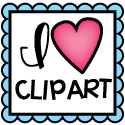I have been very interested in STEM education for quite a while. For those not familiar with STEM it is an acronym for Science, Technology, Engineering and Mathematics. The proponents of STEM education view it as preparedness for students life in the 21st century. The number of STEM jobs available to school graduates is increasing sadly however the number of students electing STEM subjects for their upper highschool and university years is falling.
This leaves educators and engineering based employers with a big problem for the workforce of the future.
My focus is on primary school science education in Australia, having taught science for 7 years. In the early years I also taught maths through the middle of each day. I recall doing the TechnoPush Kids Design Challenge and building with my maths class a mean green billy cart which we raced at Eastern Creek Raceway with loads of other school kids. I now realise we were doing STEM and in a very fun way. The kids had a great time and so did I. It was all so practical and they were motivated to drive their creation and to race it at a day away from school.
The building of the billy cart was a huge and daunting challenge for me as a teacher. I had to extend myself far from my comfort zone and add a lot of extra hours outside of class sourcing materials and doing things to the cart that the students could not for safety reasons. This level of extension, discomfort and committment could be very intimidating for many classroom teachers and the reasons why so many brush science aside.
As I delve further into the world of STEM though, not only do I see why it is vitally important that Australia take on the same level of enthusiasm other countries have for STEM, but I fear we will be left behind if we do not act in the next few years. The American government aims to have over 100 000 STEM qualified teachers in their schools within the next 5 or so years and is partnering with major STEM employing companies to ensure the targets are reached.There is great urgency seen in the UK too, but Australia is reducing government funding in the sciences and in education.
I will be focusing my blog on STEM teaching for a while as I venture down this pathway of learning. I am excited when it will lead.





















